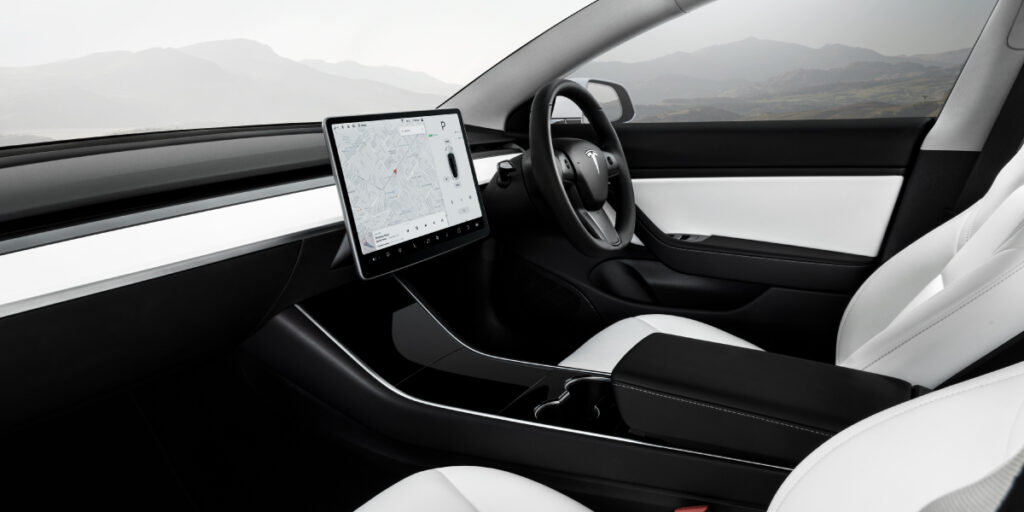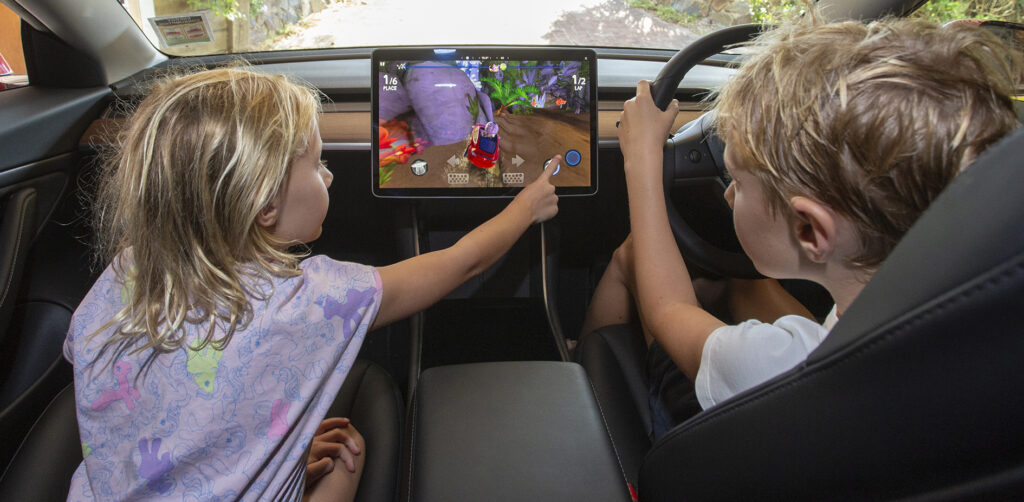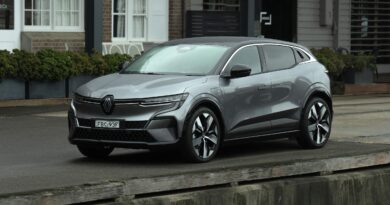2019 Tesla Model 3 Standard Range Plus review
The most affordable Tesla makes a bold EV statement.
This is the most affordable version of the most affordable Tesla. It’s called the Model 3 Standard Range Plus and is priced from $66,000 plus dealer and on-road costs (between them they edge the price over $70K).
READ OUR REVIEW OF THE UPDATED 2021 Tesla Model 3 Standard Range Plus
It uses the same body and all-electric architecture of other Model 3s but uses a single motor and smaller battery pack to keep the price down compared with those higher-performance versions.
Value
As mentioned, entry to the Tesla family starts at $66,000 plus on-road and dealer costs.
That puts it in the sweet spot of the luxury market, against rivals such as the BMW 3-Series and Mercedes-Benz C-Class.
It comes with some big ticket items that would normally sit on the options lists of those rivals. Things such as a panoramic sunroof and real leather seats, for example. Plus there’s the biggest central infotainment screen in its class, with a 15.0-inch diameter.
There’s also a crisp, clear sound system, albeit one that could do with more bass to fill out the sound.
Aerodynamically designed wheels are 18 inches in diameter, mirrors that automatically fold when parked, heated exterior mirrors and some woodgrain on the dash.
Pearl white is the only included colour, with four others (black, silver, blue or red) adding between $1100 and $2900.
Notable omissions include a head-up display and the latest smartphone connectivity. There’s also no digital radio tuning. Instead, there’s Bluetooth and the ability to control some basic features from the infotainment screen, but you’ll also need a cradle for your phone so you can select songs on your phone without copping a hefty fine.
Novelty software updates also add to the wow factor, which is more about showing your friends than anything genuinely useful. They include some classic Atari games and something to turn the indicator into a whoopee cushion. Each can only be used when the car is parked.
Tesla quality has long been a point of discussion and there are issues with the Model 3. The most obvious is with the way the panels align or, in some cases don’t align. Gaps between the panels are inconsistent and in some instances the heights of some components sit above that of others.
Inside the Model 3 SR+
It’s more about what’s not there than what is in the Model 3.
The cabin is the epitome of minimalist design, shredding anything that didn’t need to be there – and some things that did.
A strip of wood separates the dashboard from the windscreen and there are covered storage binnacles lining the centre console. While the fit and finish of the exterior is below par, the interior is nicely put together, although ours had the occasional rattle.
Having that big sunroof ensures plenty of natural light. While it has “ultraviolet and infrared protection” there’s no cover for it and the tinted colour doesn’t block all the sun.

In the rear, that sunroof liberates more headroom, although taller folk will still find their heads grazing the glass.
There’s no ignition, no start button, no park brake and no instrument cluster. There are also no buttons to adjust the steering wheel or mirrors.
Instead, it’s all up to the central screen, which is an enormous 15.0-inch unit and really defines the interior.
That screen has some funky diagrams and instructions for helping you along the way and the icons are generally clear and easy to locate.
A few minutes of familiarisation is all you need to become a wiz of diving in and out of menus and controlling everything from the glovebox to the semi-autonomous driving functionality.
I didn’t get off to the best start with our Standard Range car.
Within 10 minutes the Bluetooth phone connection died and the sound system took over with a very annoying noise that sounded as though speakers had short-circuited. The volume knob on the steering wheel did nothing and the screen wasn’t responding to any inputs.
In trying to overcome the sound I then noticed the screen had locked and was not displaying accurate speedo information. Then the screen died altogether, leaving me with no infotainment, no instrument cluster and no clue as to what was going on (or going wrong).
Within a couple of minutes it rebooted and we were mostly back on deck, although a spinning wheel of death suggested things were taking some time to come back to life.
Apparently this sort of crash-and-reboot is not unusual in the Tesla world…
Performance and efficiency
Tesla is all secretive these days with power figures and battery capacities, which makes it more difficult to work out what’s going on beneath the skin.
According to the documentation supplied to the Australian government the single rear motor produces 225kW of power.
As for the marketing message, it’s all about performance potential; the Model 3 Standard Range Plus is claimed to hit 100km/h in 5.6 seconds on the way to a top speed of 225km/h.
Acceleration is certainly perky, albeit without the thump in the back and never-ending surge of the Model 3 Performance.
Instead, it’s an enthusiastic rush towards triple figures, making for brisk (and near-silent) blats from the traffic lights.
You can adjust things such as an automatic transmission-like creep at traffic lights or how much regeneration you want when you lift off the accelerator. In its most aggressive mode (which captures more energy so reduces how much electricity you use) you can avoid using the brakes most of the time.
Charging
Determining the battery capacity is a challenge because it’s all top secret from Tesla these days. Whereas once they stamped the battery capacity on the rear of the vehicle, nowadays it’s not even quoted in the online specs.
Do some calculations using data from the Greenvehicleguide.gov.au website and you’d think the Model 3 Standard Range Plus has a huge battery. Average energy consumption is claimed at 18.8kWh per 100km and the forecast electric range is 470km. That would suggest a usable battery capacity of about 88kWh.
A Wikipedia page suggests the capacity is 62kWh, which seems more like it.
Either way, expect somewhere around 350-400km from a charge.
AC charging is limited to 11kW using a home wallbox or destination charger, the latter displayed on the central screen. By the end of 2019 Tesla is promising up to 350kW from its superchargers, which should deliver an 80 percent charge in around 15 minutes.
As with all Teslas, the Model 3 can access the vast Tesla charging network as well as any Type 2 or CCS (combined charging system) charging plug.
Ride and handling
The Standard Range Plus may be the base Model 3, but Tesla has ensured it doesn’t feel undernourished to drive.
There’s a sporty flavour to the way it responds, starting with the steering that is very direct, so doesn’t require a big input for a big result. There are three levels of feel to the steering – Comfort, Standard and Sport – each dialling up the resistance to the point where Sport feels unnaturally firm. The Comfort setting is nice and light but brings with its some mushiness with quick direction changes. That makes Standard the pick.
Decent 18-inch Michelin tyres are also well up to the job with good cornering grip to go with that alertness elsewhere.
The one letdown is the ride, which is firm to help deliver that sportiness. Jiggling ensues and the Model 3 isn’t a fan of repeated big bumps.
Party tricks
It’s when it’s stationary that the Model 3 showcases some of its quirkiest gadgets.
The retro Atari games are one of the highlights, allowing people to play games when the vehicle is stopped and in Park.

Turning the indicator sound into that of a whoopee cushion is also something very different.
And you can guarantee Tesla will add more features throughout the car’s life. Tesla was the first to do over-the-air software updates and the company has already said Roblox and Minecraft will be joining the games console in future.
Safety
All Model 3s come with Tesla’s Autopilot, which is a tad misleading considering it doesn’t fully control the car.
Instead, it’s about level two autonomous driving, which can provide lane keeping assistance, lane changing and auto acceleration and braking.
Those functions also contribute to the crash avoidance.
Autopilot incorporates eight cameras for vision around the car. It even gives you an idea of how the computer is crunching the data from those cameras and the complementary 12 ultrasonic sensors, providing a real time graphic of surrounding obstacles on the centre screen.
There’s also a forward facing radar to look further down the road (up to 160m) although no radar out the rear. That means the car can only predict things happening about 50m behind the car, so anyone arriving fast from behind could catch the car out.
And even with all that gadgetry, it throws up false-positives fairly regularly, warning of what it thinks is an imminent nose-to-tail, for example.
If you do progress to full crash rest assured you should be well protected. The Model 3 scored five stars in independent ANCAP crash testing and generally received very strong ratings.
Verdict: Model 3 SR+
Occasional quality glitches aside, the Model 3 is an impressive addition to the growing EV space.
Its futuristic interior, quirky extras and excellent driving manners cement it as a class act for its circa-$70K ask.
TESLA MODEL 3 STANDARD RANGE PLUS SPECIFICATIONS
Price: $66,000 plus dealer and on-road costs
Warranty: 4 years, 80,000km
Battery warranty: 8 years, 160,000km (70% guarantee)
EV type: Pure electric (EV)
Motor/s: AC induction motor with partial permanent magnet
Power/torque: 225kW/Nm
Transmission: Direct drive single speed, rear-wheel drive
Electricity use: 18.8kWh/100km (Greenvehicleguide)
Charger types: Type 2, CCS, Tesla
Battery capacity: 62kWh (estimated)
Claimed range: 409km (WLTP), 470km (Greenvehicleguide)
Maximum charging power AC/DC: 11kW/350kW
0-100km/h: 5.6 seconds (claimed)
Top speed: 225km/h (claimed)




